 CURE NATION: When we met wheelchair user Steve Bertasso a few months ago, it was a happy coincidence. He was near the Los Angeles Abilities Expo thanks to another construction conference he was attending, and decided to stop in. Within a few moments, we realized Steve’s expertise in home design along with his own lifestyle adjustments due to paralysis would be helpful for all of our friends in the Cure Nation! Read on to learn more on how Steve adjusted his home for accessibility after learning he had Hereditary Spastic Paraplegia.
CURE NATION: When we met wheelchair user Steve Bertasso a few months ago, it was a happy coincidence. He was near the Los Angeles Abilities Expo thanks to another construction conference he was attending, and decided to stop in. Within a few moments, we realized Steve’s expertise in home design along with his own lifestyle adjustments due to paralysis would be helpful for all of our friends in the Cure Nation! Read on to learn more on how Steve adjusted his home for accessibility after learning he had Hereditary Spastic Paraplegia.
Steve Bertasso is 44 years old and currently resides in Orem, Utah, with his wife Rochele and three children, Carter, Dallin and Sawyer. Prior to 2015, they lived in Nashville where Steve worked in the construction business, consulting with builders and homeowners as well as on some commercial projects. It was there that he developed the first ‘green’ building program for a production home builder.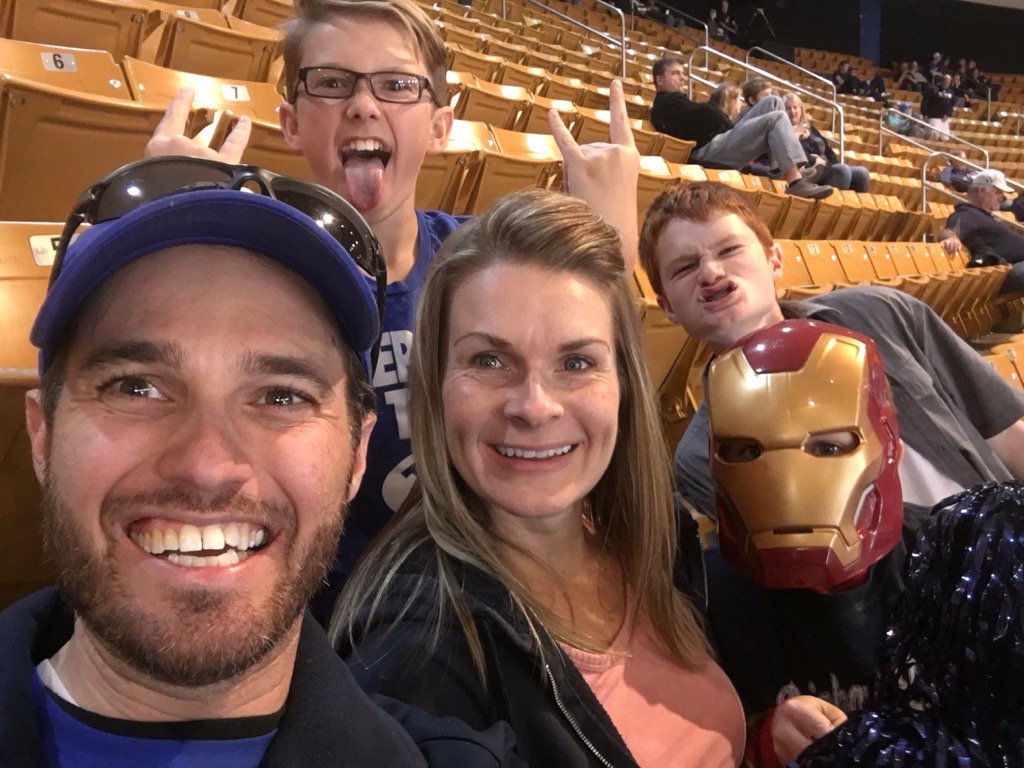 Steve’s first degree came in Construction Management at Brigham Young University. He went on to complete a MBA with a focus on sustainable business practices, which means developing green systems for builders and companies to reduce their carbon footprint.
Steve’s first degree came in Construction Management at Brigham Young University. He went on to complete a MBA with a focus on sustainable business practices, which means developing green systems for builders and companies to reduce their carbon footprint.
THE POINT IN TIME WHERE STEVE’S MOBILITY CHANGED
About seven years ago, Steve began having trouble walking. “I remember the exact location,” Steve recalls. “I was in downtown Nashville walking across Legislative Plaza when I noticed I was tripping on all the seams in the concrete pavers.”
That moment began a ten-month ordeal, ultimately leading to a diagnosis of Hereditary Spastic Paraplegia. A degenerative disease, HSP affects the nerves controlling ankle and hip flexors and in some cases, like Steve’s, his speech. It was a diagnosis of exclusion, meaning they had to rule everything else it could be out.
“At first, it was a relief to have a diagnosis,” he says, “but eventually reality set in and it was difficult. Depression and loss were a big part of my life as I watched my condition evolve,” he explains.

“My biggest worry was how it would affect my family and work. My kids were seeing their dad being less involved in certain types of activities, and working on the job-site required a lot of physical ability. I worried about how I was going to provide for my family.”
As far as work was concerned, Steve’s condition presented a number of issues. The job-site work required a lot of tasks which were becoming increasingly difficult to do. When his doctor said no more climbing on ladders, Steve knew his days there were numbered.
CREATING A NEW CAREER IN THE SAME KIND OF BUSINESS
Four years ago, Steve kicked off his private consulting business. With the progression of the disorder, he knew he’d have to create his own lane in order to remain in the construction field. As a consultant he could set his own hours and work from home (two very important factors).
Steve’s biggest worry was being in the field for 28 years and not be able keep doing construction, to not be able to use the extensive experience he had. He also knew that companies had concerns about his ability to perform his job.
It’s an all too familiar situation facing anyone with a disability who is looking for work.
“Right now, I can still walk around in controlled environments, but eventually I will need my chair everywhere, and my speech may continue to deteriorate as well,” Steve laments. “I still have the moments when I mourn the loss of something (like hiking or running or working as often on my house), but I try to keep some perspective. I have opportunities and I am content with where I am.”
One of those opportunities came when a construction software company called MiTek, headquartered in Chesterfield, MO, had a need for a technical documentation specialist. They offered Steve the job. He accepted. With MiTek, Steve can work remotely from home where he can use tech to put himself on site, removing all the obstacles that once existed there.
“MiTek has been very accepting of me and have been great to work with,” he beams. “I just went on my first trip to their headquarters and took my service dog Annie and it couldn’t have gone better. I think they want to make her the company mascot.”
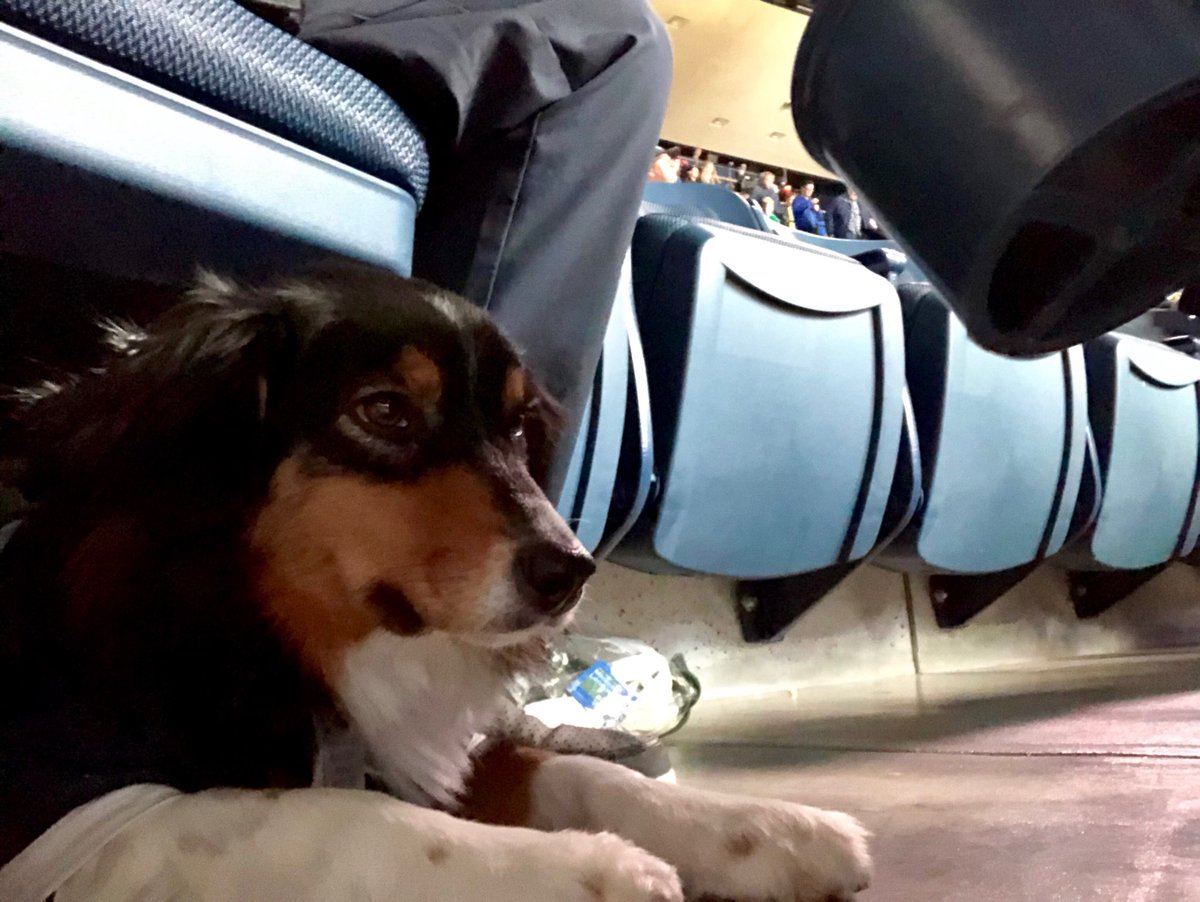
MAKING THE WORLD AROUND YOU ACCESSIBLE BY DESIGN
Right now, making places accessible is still in the hobby phase for Steve. If anyone in his community needs anything, he’s glad to help, even something as simple as putting in a ramp. He believes in paying it forward.
“The first thing we did to my own home was build a 320-square foot deck, accessible of course, on the back, complete with a route leading from my garage to the back yard,” Steve details.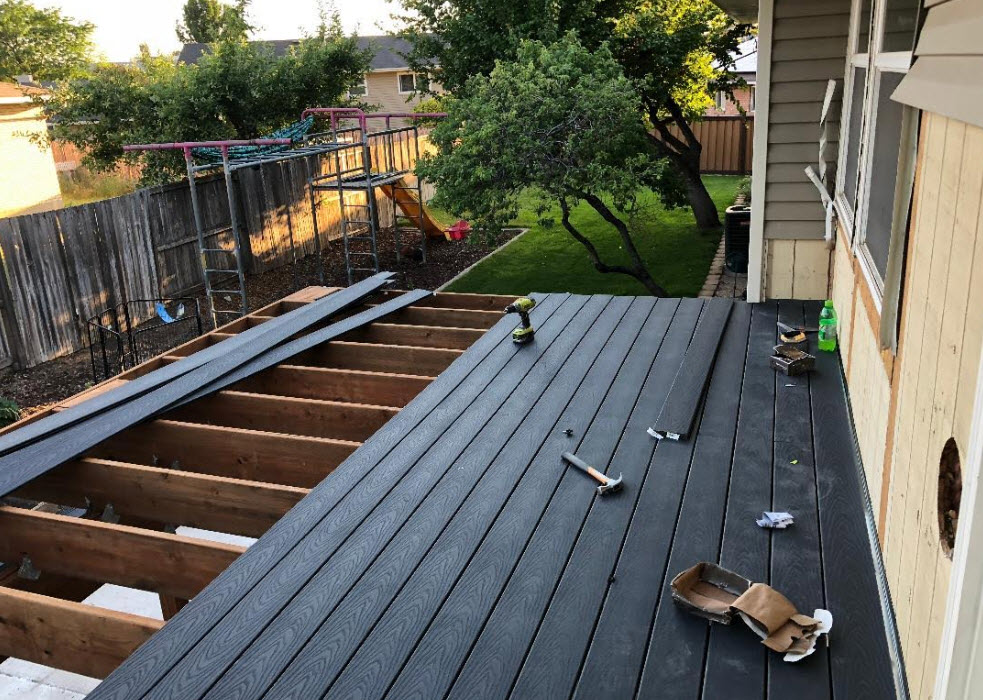 “We’re kind of in the process of converting the rest of our house. I’ve got designs in the works for our bathroom, kitchen, and the biggest thing might be an elevator. Right now, I have a tall tub with a seat in it that I use but one day I’m going to need a roll-in shower. My next project is replacing the flooring and fixing the high spots so I can get around easier.”
“We’re kind of in the process of converting the rest of our house. I’ve got designs in the works for our bathroom, kitchen, and the biggest thing might be an elevator. Right now, I have a tall tub with a seat in it that I use but one day I’m going to need a roll-in shower. My next project is replacing the flooring and fixing the high spots so I can get around easier.”
“As far as tips for making your house more green,” Steve continues, “replacing toilets with more water efficient options is a good place to start. You can add insulation to the attic, replacing insulation around exterior doors and install a smart thermostat. Those are some good first steps.”
MORE ADVICE FOR ACCESSIBLE LIVING
No one builds or designs a home with the thought of using a wheelchair. That’s why more than 99 percent of all homes built are not wheelchair accessible. If you’re going through the process of making your home easier to access on wheels, we have more resources in the CURE NATION that can help too!
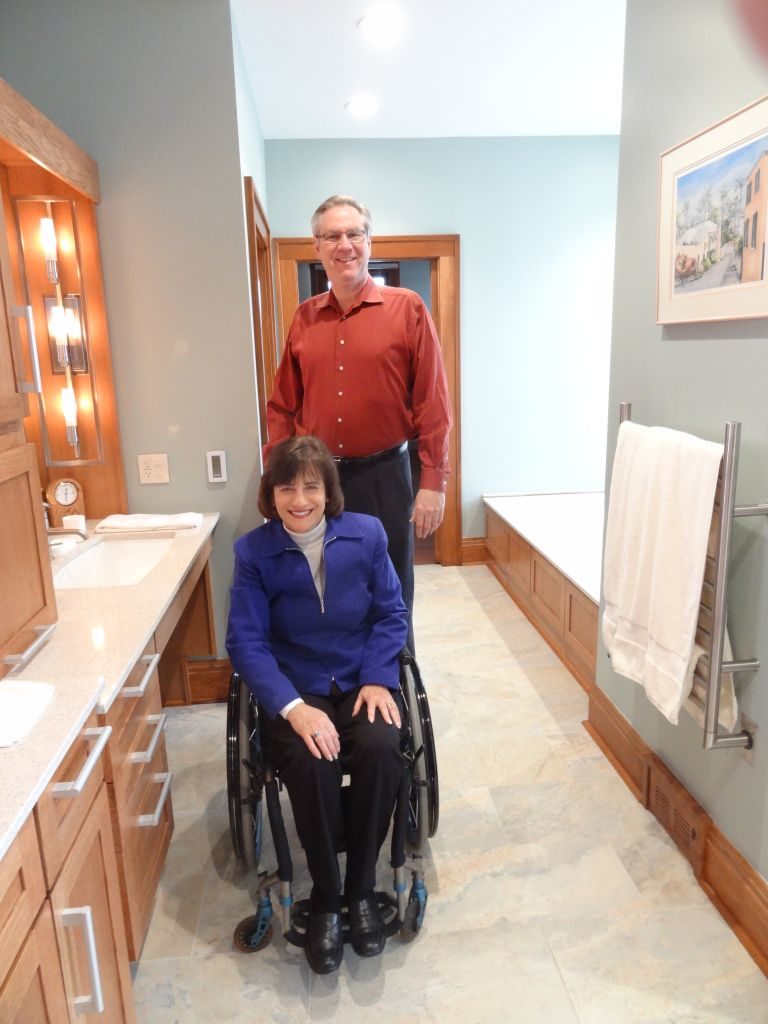
When Rosemarie Rossetti of Columbus, Ohio, felt as though her home no longer fit her needs, she built a totally accessible home with everything she needed.
In this post, we look at the universal design that Rosemarie and her husband, Mark Leder, developed and learn how they procured funding, enlisted the help of sponsors and advisors and created a book, titled “Universal Design Toolkit: Time Saving Ideas, Resources, Solutions, and a Guide for Making Home Accessible.”
Looking for ways to improve your home’s accessibility, but working on a budget? See the following ideas below that won’t break the bank while helping you enjoy more comfort and access at home.
4 Ideas to Make Your Home More Accessible Without Breaking the Bank

STEVE FOUND A NEW FRIEND TO GUIDE HIM THROUGH LIFE
“How did I get a service dog?” Steve answers. “Well, I was still doing a lot of traveling on my own and got concerned if something happened how would I get help? I was fortunate to find a trainer who teaches people how to train their own dog so it doesn’t cost so much.”
“We started the process by picking a pup for me, an Australian Shepherd named Annie, and at eleven months we started her training. We taught her to assist me in crowded areas. She clears a path for me to keep people from bumping into me, and if I drop something she’ll pick it up for me.”
“She’ll even get things off the bottom shelf of the grocery store for me.”
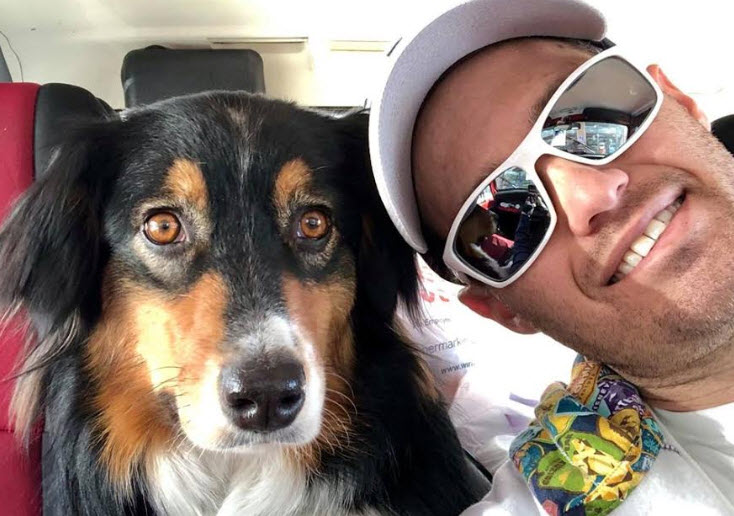 “Annie’s a great dog. She can open any door with a button. After fifteen months of training, Annie passed her service dog exams and we were off! She’s been everywhere with me, even to Disneyland to ride the rides,” he says with a laugh.
“Annie’s a great dog. She can open any door with a button. After fifteen months of training, Annie passed her service dog exams and we were off! She’s been everywhere with me, even to Disneyland to ride the rides,” he says with a laugh.
“One of the biggest ways she’s made my life better is socially,” Steve adds. “Annie is approachable and a great conversation starter. I’ve noticed people talk to me more when I have Annie with me. She helps me feel not quite so alone when I’m away on business. I think my wife and kids worry about me less too when she’s with me. She’s a real companion to me.” Together, they’re ready to take on the world.
WHEN THE TIME COMES, STEVE WILL CHOOSE A CURE
Steve understands that as his case of Spastic Paraplegia progresses, he may have to eventually use intermittent catheters. That’s why he was so glad to learn about Cure Medical and that their catheters are not made with scary chemicals like DEHP/DINP, BPA or natural rubber latex.
“After my diagnosis, I read everything I could get my hands on about my disorder, progression and complications. One of the many concerns is loss of bladder control,” he explains.
“While no one ever looks forward to using catheters and other home medical devices, the advancements in today’s technologies are promising. It is comforting to know Cure Medical is working to make products like catheters safer and more comfortable,” he adds.
 To request free samples of the Cure Catheter® or any Cure Medical catheter, contact your local distributor of quality healthcare products, or click here.
To request free samples of the Cure Catheter® or any Cure Medical catheter, contact your local distributor of quality healthcare products, or click here.
Founded by a quadriplegic, Cure Medical is the only catheter manufacturer in the world that donates the first 10% of its net income to support research programs in pursuit of a cure for urinary retention, paralysis, spinal cord injury and central nervous system disorders.
Enjoy Our Free Resources & Articles
CURE NATION is designed with you in mind, to offer assistance and education when you need it through a personal support program.
All of the information you find below and on our related social media pages is meant to guide you to places, topics and resources that enhance your life, while also connecting you with a growing group of friends.
View our lifestyle resources by condition type:
Multiple Sclerosis, Pelvic Organ Prolapse, Prostate Cancer, Spina Bifida, Spinal Cord Injury and Transverse Myelitis
- Sign up for our free, CURE NATION e-newsletter to have our latest stories delivered directly to you, once a month.
- Get our FREE LIFESTYLE + ACCESSIBLE TRAVEL BOOKS here.
- Meet us in person at a CURE NATION event.
- Have an idea you’d like to share? Let us know.
- Be sure to take minute to meet our Cure Advocates too.

